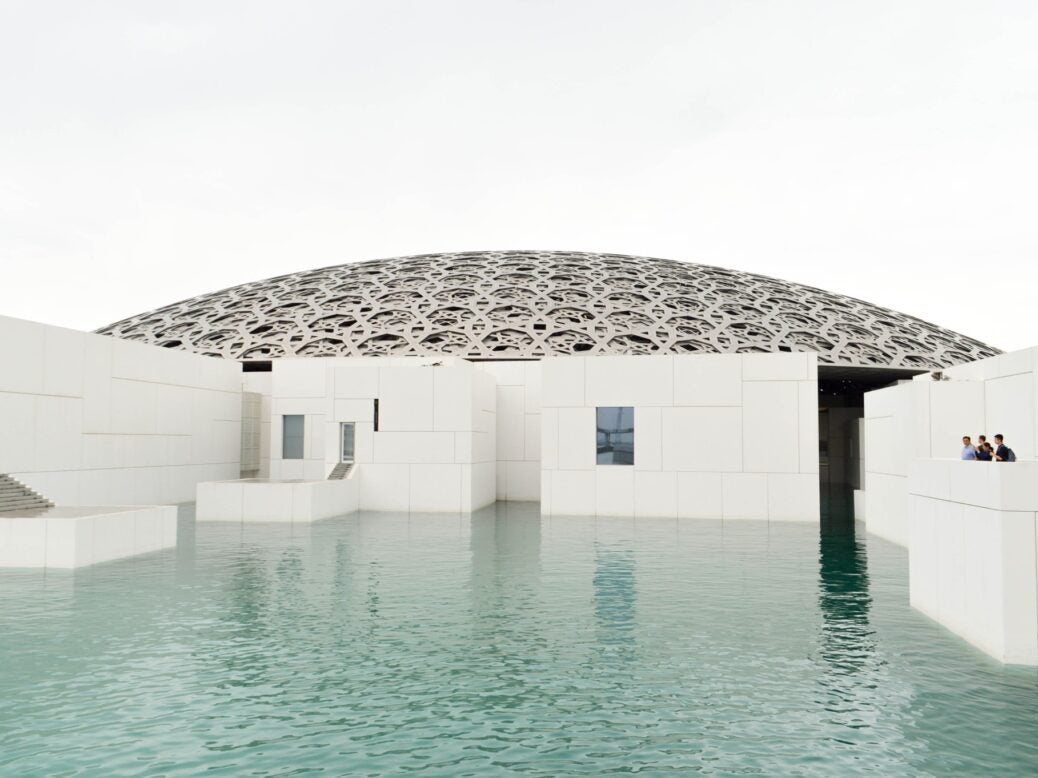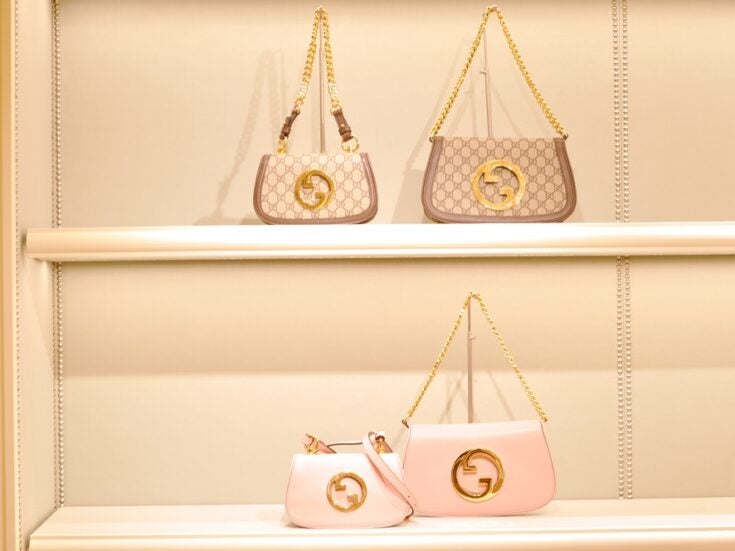
The new marbled museums and opera houses of Oman and the UAE represent cultural challenges as much as consolidation, writes Alex Matchett
Opera is the fusion of art. Design, music, dance, poetry and drama all come together on the stage and in doing so they represent an enduring and honoured kernel of culture. Perhaps above all though, these things tell a story, not only through the actions of their characters but through their own advent – describing the society, history and nuances from which they were born. For centuries that has been seen as an almost exclusively European phenomenon but now other states, notably in the Arabian peninsula, are looking to write their own cultural stories. Not only through the medium of opera but through curated heritage in marbled museums and extravagant art galleries. But what do these latest megaliths of the arts say of the import and export of culture and how do they frame the creation of provenance in history’s fastest developing century?
‘Step by step inshallah. Maybe in ten years we’ll have the first Omani opera,’ says Salwa Al-Zadjali. She is standing inside the palatial marble foyer of Muscat’s Royal Opera House, addressing a group of journalists ahead of the opening of its new House of Musical Arts; a performance space primed to host orchestras, choirs and performing arts apart from the formal trappings of an opera setting. Like the Opera House proper, the decor of the House of Musical Arts is inspired by the castles and redoubts that populate the Omani countryside, the wooden panelling and plush red seating for 500 are framed quietly by the cool Italian marble that encapsulates the whole complex. At night the lighting of the Arabian arches under the stars gives an ethereal glow to the site.
Linked by a flying bridge, the Opera House is predictably more opulent. Built between 2007 and 2011 it was the third in the Arab world after Syria and Egypt; it seats 1,100 on four levels with space for 250 musicians and a 500 tonne pipe organ with a hydraulic lifting system. Such a set up has endowed a burgeoning international reputation that has seen numerous national productions visit. On the opening night of the House of Musical Arts the Czech National Symphony Orchestra perform alongside the Royal Oman Symphony Orchestra, complementing Nessum Dorma with classic Omani folksongs and the impressive Ibn Oman. Two nights later the a poignant production of Madame Butterfly set amidst the ruins of Hiroshima is performed in the opera house by Castell Peralada in co-production with Deutsche Oper Am Rhein.
The curation alongside the costumes and instruments exhibited in the foyer points to Sultan Qaboos bin Said al Said’s vision for cultural exchange. That has certainly been achieved as the opera house is already the third biggest attraction in a country that in 2017 welcomed over 3 million tourists. The cultural gravity Oman’s opera scene is seeking is further evidence by its hosting of the V&A’s Opera: 400 Years of Passion exhibition, a truncated edition of its Opera: Power, Passion & Politics that premiered in London in 2017.
‘We’re proud to be able to collaborate with the ambitious and impressive series of cultural developments initiated by his majesty,’ says the V&A’s COO & deputy director Tim Reeve at the exhibition’s opening. ‘It’s not cultural import or export it’s cultural dialogue. Every time it goes on tour, the exhibition will respond by adding a chapter; so there’s a chapter here on Oman and opera in Oman. We’re not just parachuting in, it is of its context.’
Reeve’s’ colleague and the exhibition’s curator Kate Bailey emphasises the need for an exhibition on the great cities of opera to speak to new initiates. ‘You’re looking at how opera moves through time and you’re looking at how opera speaks to the society from which it was created. It’s so universal because you get that incredible range of feelings from it. Whether you’re in Oman or whether you’re in London, the power of the music speaks to the audiences and because it’s a big subject it can deal with big issues.’ Were the big issues of satirising rulers and social debauchery fully licenced for the Omani edition? Bailey says the curation is sensitive (the nudity and infidelity is out) but that the story of opera is not one of decadence: ‘It’s the story of cities and people and that connection with the opera house, the state and society, that is the journey.’
The concept of a cultural journey feels apt but tempts a trap. Muscat’s opera house is a cultural destination but that is not in lieu of Omani culture – it represents a window on art, not a bought badge to designate taste. If this is a cultural journey it is not as simple as moving from the desert to the city. That said, it is undeniable that, like so much of the growth within the Gulf, the Omani Royal Opera House is a product of the cultural, social and economic contrasts brought to the region by oil wealth.
Five hundred kilometres west, in the Al Mina suburb of Abu Dhabi, across from the fish market and the sun-cracked husks of beached dhows, is the gallery Warehouse 421. In the corner of the gallery Monira Al Qadiri’s video installation Diver plays. The film shows synchronised swimmers moving through oil-marbled water to the coarse rhythm of traditional songs sung by the Gulf’s pearl divers. It addresses the petro-complex and the sometimes jarring dialogue between the ‘pre-oil’ and ‘post-oil’ generations.
‘Our generation is so quick to romanticise the pre-oil, saying “wow it’s so beautiful”. They were diving for pearls but they were dying for these pearls. It’s very harsh that reality,’ says curator Munira Al-Sayegh. ‘When you speak to that generation they’ll respond to you with the same romanticism – they won’t let you down and tell you how difficult it was. [Al Qadiri] looks at that skewed understanding of history through that romantic lens… In a lot of advertising now you hear the pearling music.’
Standing in the half-light of a photograph exhibition entitled The Architecture of Loneliness which depicts the dilapidated petrol stations that punctuate the Emirati desert, Al-Sayegh addresses what she sees as misplaced Western assertions: ‘There’s a certain expectation that Arab women are “X,Y,Z” but in reality we’re empowered, we’re liberated, we’re respected, we’re put in positions of power equal to men. The Emirates is a transient place so a lot of people come, dump their own opinions and don’t care to actually dive into what is there. They leave and they really haven’t changed the way that they think. Just as our landscape is evolving, we as a people are evolving. I am not my grandmother.’
The industrialisation and birth of modernity that took 200 years in Europe has happened in just 40 in the Gulf says Al-Sayegh, and has taken place at a time when even culture is becoming globalised – ‘but then what do you hold onto traditionally? That tension is definitely being seen in a lot of works here and outside of this exhibition.’
Perhaps the grandest temple to culture on the oil-boom skyline sits just up the road from Warehouse 421. The Louvre Abu Dhabi is architecturally inspired: A latticed dome over a space that aligns white cubes to dance with shards of sunlight and the green waters of the Persian Gulf. The permanent exhibition is equally ambitious as it attempts to funnel the human history of the world: leaning on 30-year loans from the Parisian Louvre while the museum builds its own collections; it is a wonderfully garnished montage of global art.
Doesn’t the Louvre Abu Dhabi epitomise that tension for Al-Sayegh; representing the shipping in of a ‘globalised’ culture like so many shopping malls? ‘It’s a very shallow argument in my opinion because it’s not like one day we woke up and there was a Louvre,’ she says. ‘This institution has a French name but it’s backbone is Emirati right now. I think if you were to remove the name and put any other name it would still function in the same way that it’s functioning. The Louvre is doing exactly what it needs to do which is the same thing that The British Museum does for London. Western media doesn’t cover what’s actually happening. Sure you have the Louvre but you now have the first fort ever built in Abu Dhabi finally restored and open to the public. To have that contrast creates the dialogue.’
The Al-Hosn fort Al-Sayegh references opened in December 2018 as the flagship museum of Emirati heritage and history. Situated in the centre of Abu Dhabi the white walled square is humbled by the towering shards of glass that surround it. Inside are exhibitions marking the development of the Emirati state and the life of Shakhbut bin Sultan Al Nahyan and his brother and founder of the UAE, Sheik Zayed. The inner fort dates from around 1795 with the palace complex being added in the 20th century.
The aim of the restored fort is to anchor the nation’s heritage and remove the myth ‘that we just blew in from the sand,’ says Al Hosn’s director Salama Shamsi. In doing so it houses exhibits of archaeology, trade and the pearling industry, along with working artisans. However, the collection on the whole is small, with perhaps the most space reserved for telling the story of modernity through eye-witness accounts of the first oil concessions, radio broadcasts, airports and their impact.
As Abu Dhabi’s oldest building, it represents a contrast, not least because it is poised to share the weight of telling the nation’s history with the country’s newest building: The, as yet unbuilt, Zayed National Museum is scheduled for the 2020s and, like the Louvre’s set-up, it plans to operate with external cooperation and training – in this case from the British Museum. As with the much discussed Guggenheim Abu Dhabi it currently resides in expensive artistic renderings from the world’s most notable architects.
It remains to be seen if monumental museums will be the best instruments with which to weave the Gulf’s cultural fabrics; so much remains to be told because so much remains to be written, there is a nascency here as much about self-realisation as self-presentation. Spaces such as the UAE’s Warehouse 421 and the excellent Manarat al Saadiyat are already speaking to the social, religious and political issues of the region. While in Muscat the Royal Opera House is beginning to show a legacy: ‘We hope to have an Omani opera written and performed by 2021,’ says one official source. No one can say how the future will sound but it will no doubt hope to honour the quality of the acoustics it has been afforded.
Sitting in the shade of Al-Hosn’s walls two Emiratis recreate the traditional nomadic desert setting, stashing their smartphones and striking up a song as we approach. Behind them Asian construction workers drive diggers and lay pipes in the sandy earth, slowly merging the last bare block with the rest of downtown Abu Dhabi, bringing the desert into city. As Al-Sayegh observes: ‘Culture was never imported, it was always here but it’s shifted and taken a more global form.’
Alex Matchett writes for Spear’s









